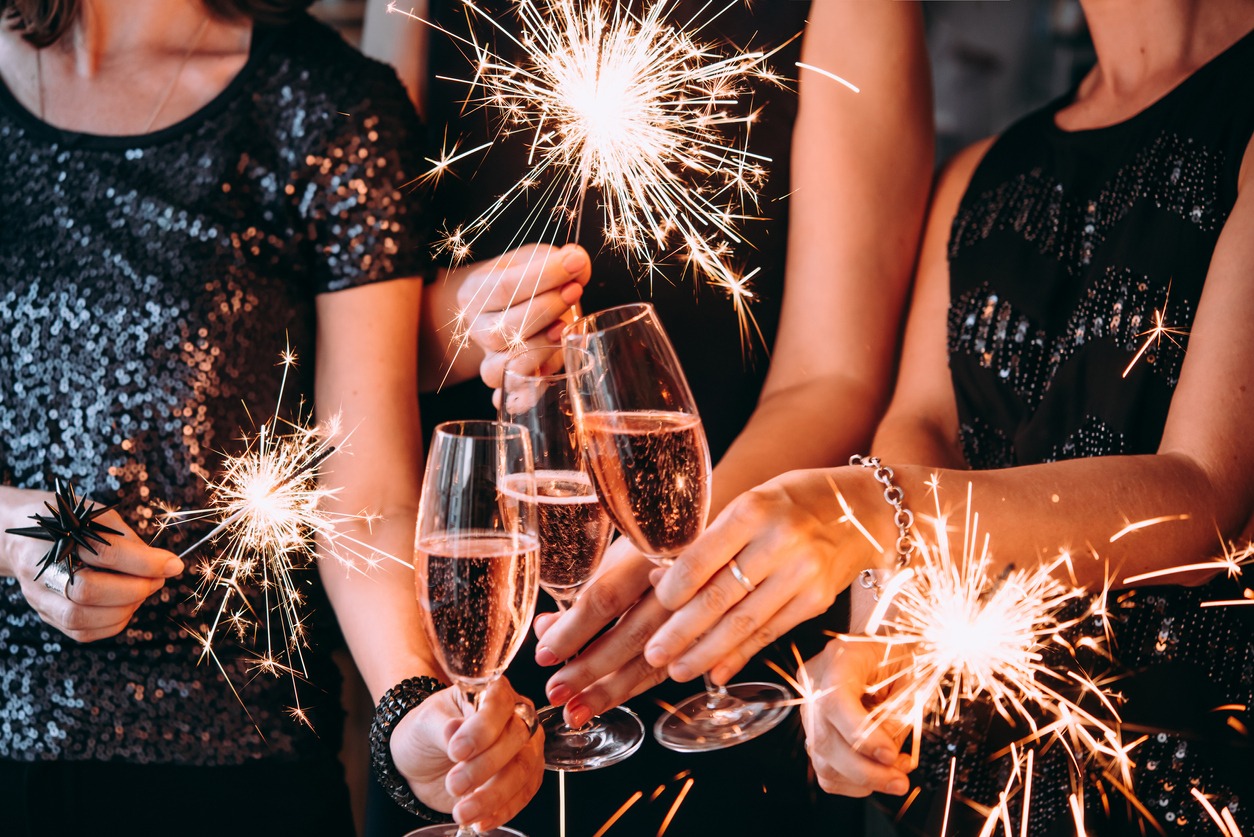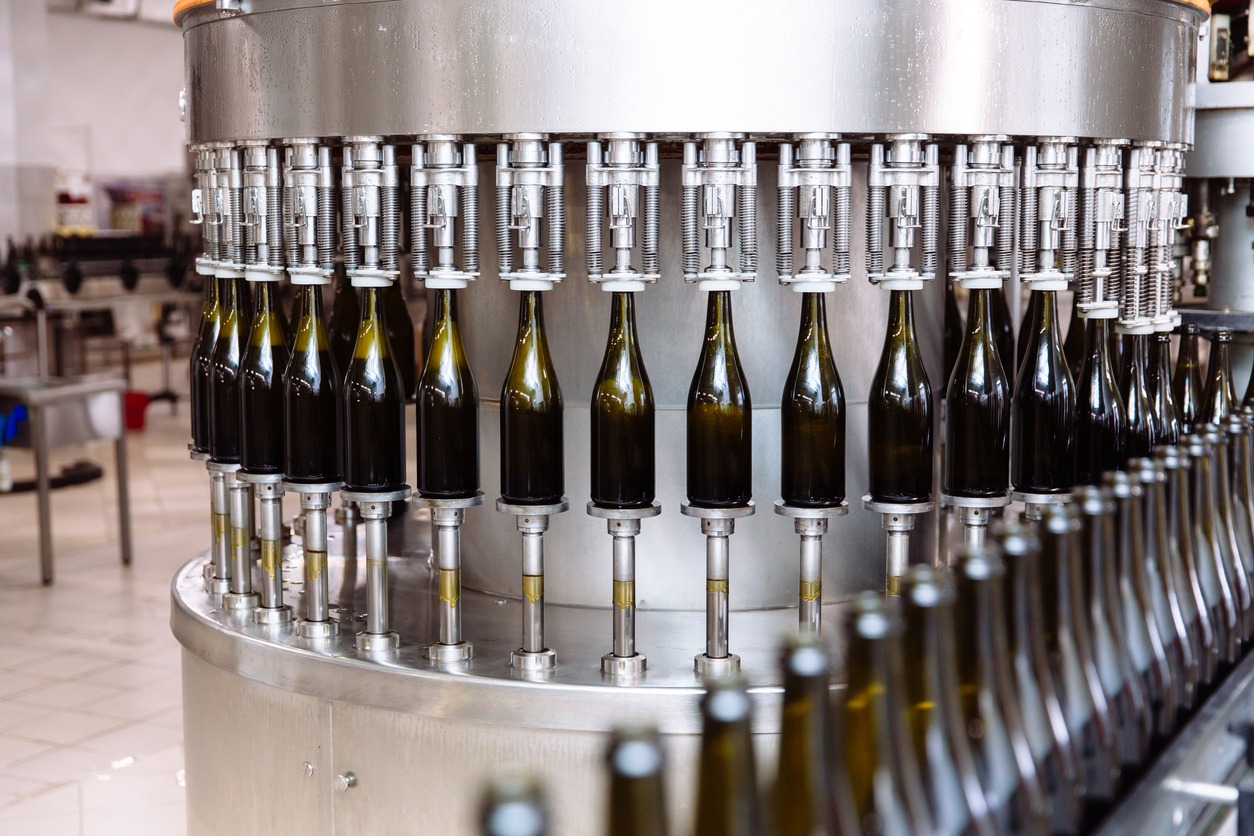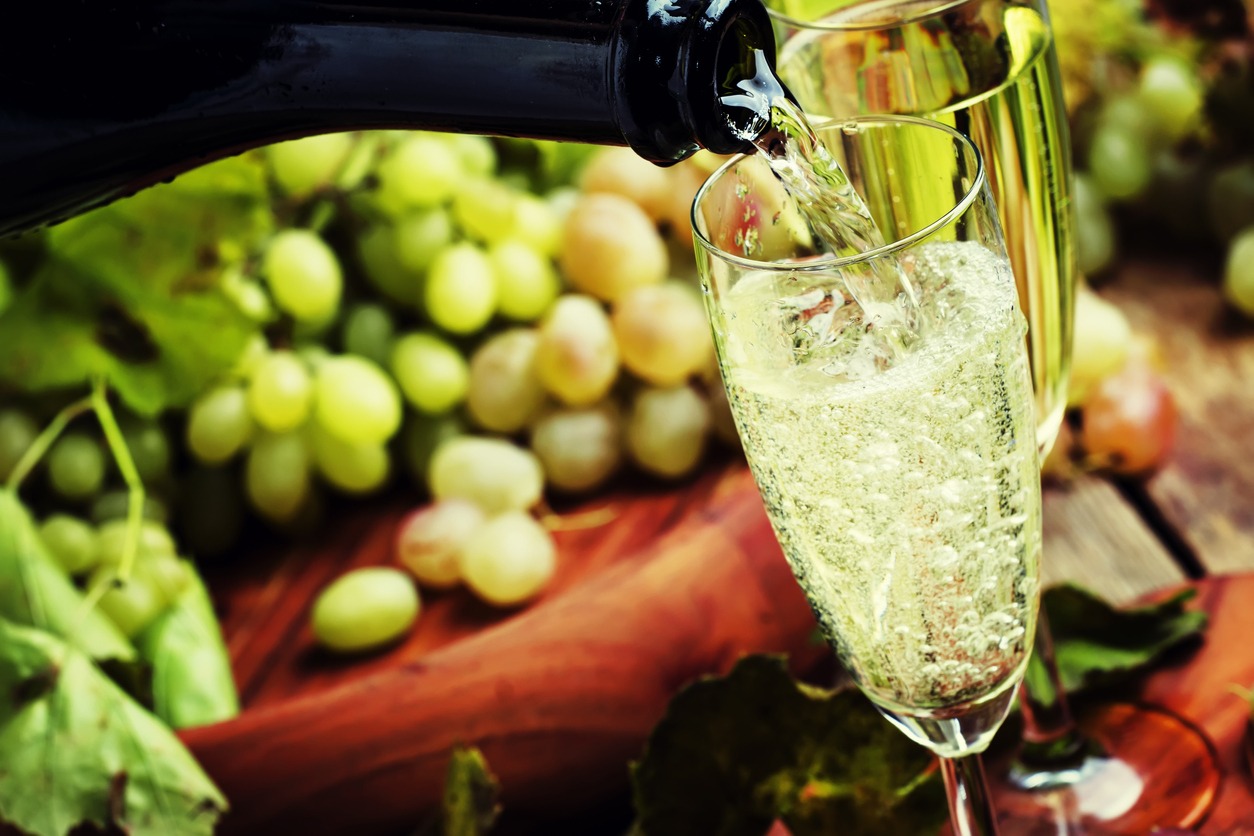Have you ever wondered about the enchanting elixir that has graced history’s most joyous occasions, leaving a trail of effervescence and elegance in its wake? Champagne, with its golden hues and dancing bubbles, has a history that goes far beyond its humble beginnings in the storied vineyards of northeastern France. What is it about this sparkling wine that makes it so synonymous with celebration? Take part on a journey through the world of Champagne, where history, craftsmanship, and the spirit of celebration come together to create a beverage that defies time and tradition. What secrets are hidden within the bubbles that make every cork pop a joyous occasion? Let us uncork the mysteries and savor the Champagne story.
Champagne
Champagne is a sparkling wine produced in the Champagne region of northeastern France. It is well-known for its effervescence, lightness, and association with special occasions and celebrations. Champagne’s distinct characteristics are attributed to its production method, known as the méthode champenoise or méthode traditionnelle.
Chardonnay, Pinot Noir, and Pinot Meunier are the primary grape varieties used in Champagne production. A second fermentation occurs in the bottle during the winemaking process, resulting in carbonation. Following fermentation, the bottles are aged on the lees (dead yeast cells), which contributes to the wine’s complexity and flavor profile.
Champagne is known for its various styles, which range from dry to sweet. Brut (very dry), Extra Dry (slightly sweet), Sec (medium-dry), and Demi-Sec (sweet) are the terms used to describe the sweetness levels.
Champagne has become a symbol of luxury and celebration, in addition to its distinct flavor. It is frequently associated with toasts at major life events such as weddings, anniversaries, and New Year’s Eve celebrations. The popping of a Champagne cork and the sight of bubbles rising in the glass evoke a sense of joy and festivity, elevating it to the status of a cultural icon.
History Of Champagne
Alt tags: Vineyard, Epernay, Outdoors, Bottle, Cave, Champagne, Pouring, Event, Celebration, Table, Anniversary, Drink, Elegance, Luxury, No People, Restaurant, Romance, Special Occasion, Travel
Champagne’s history dates back to the 17th century in the Champagne region of northeastern France. Winemakers initially faced difficulties due to the cold climate, which resulted in unintentional secondary fermentation in the bottle. Dom Pérignon, a Benedictine monk, made significant contributions to winemaking in the region, perfecting techniques such as grape blending and the use of cork stoppers.
The méthode champenoise, which involves a second fermentation in the bottle, was developed in the nineteenth century, giving Champagne its signature bubbles. Champagne rose to international acclaim, becoming synonymous with luxury and celebration. During this period, well-known Champagne houses such as Veuve Clicquot and Mot & Chandon emerged.
Despite challenges such as the late-nineteenth-century phylloxera epidemic, Champagne recovered, and the region was granted AOC (Appellation d’Origine Contrôlée) status in 1927, recognizing and protecting its distinct qualities.
Champagne evolved throughout the twentieth and twenty-first centuries, adapting to changing tastes and incorporating technological advancements while maintaining its traditional craftsmanship. It is still a symbol of celebration and is widely enjoyed during significant life events and festive occasions around the world.
How Champagne Is Made
The art of crafting Champagne is a thoroughly orchestrated process that begins with the meticulous cultivation of grapes in the Champagne region’s vineyards. To ensure pristine quality, Chardonnay, Pinot Noir, and Pinot Meunier grapes are harvested by hand. Following gentle pressing, the juice goes through primary fermentation, producing still wine. The magic happens during the second fermentation of the méthode champenoise, when a blend of wines is bottled with a mixture of sugar and yeast, sparking the creation of carbonation within the confines of the bottle. The aged bottles are riddled to collect sediment, which is then disgorging to expel the sediment. A carefully measured dosage is added to determine the sweetness level of the Champagne, and the bottle is sealed with a cork. Further aging brings out the complexities of the flavors, resulting in the exquisite effervescence and distinct flavor that is synonymous with Champagne.
Champagne’s distinct characteristics, from its effervescence to its diverse flavor profiles, are heavily influenced by the Champagne region’s specific terroir and the skill of skilled winemakers. This marriage of natural elements and human creativity results in a sparkling wine that is not only a symbol of celebration, but also a testament to the historical legacy and dedication embedded in each bubble-filled glass.
The Grapes Of Champagne
Champagne grapes, carefully cultivated in the sun-dappled vineyards of northeastern France, are at the heart of this iconic sparkling wine. Chardonnay, Pinot Noir, and Pinot Meunier are the three primary grape varieties that contribute their distinct characteristics to the artful blend that defines Champagne. The region’s chalky soils, combined with a cool climate, impart a distinct terroir to the grapes, influencing their flavor and acidity. These grapes are harvested with precision and go through a meticulous winemaking process, from gentle pressing to secondary fermentation in the bottle, producing the effervescence that elevates Champagne to unprecedented heights. Each sip reveals the artistry, tradition, and undeniable allure of the grapes that have graced celebrations for centuries. Champagne grapes, with their delicate balance and nuanced flavors, encapsulate the spirit of refinement and festivity within every bubble-filled glass.
Why Champagne Is Used For Celebrations
Champagne is used for celebrations due to a combination of factors that make it uniquely suited for special occasions:
1. Effervescence and Celebration Atmosphere
Champagne’s effervescence is a symphony of celebration encapsulated in a glass. The lively dance of bubbles rising to the surface creates a visual spectacle that turns any occasion into a festive moment. The unmistakable sound of a Champagne cork popping heralds the start of joyous events and toasts. Aside from its visual and auditory appeal, effervescence improves the overall drinking experience by providing a refreshing lightness that elevates the atmosphere. Champagne is an effervescent embodiment of celebration in every sip, making it the ideal companion for commemorating life’s most memorable moments.
2. Cultural Tradition
Champagne has a long-standing tradition as the go-to drink for toasts during celebrations. The use of Champagne in celebrations is a deeply ingrained cultural tradition that spans centuries and continents. This bubbly elixir has become synonymous with toasts at significant events ranging from weddings to New Year’s Eve celebrations. Its association with success, achievement, and shared joy has crossed borders, transforming it into a universal symbol of celebration. The act of pouring Champagne, with its bubbles and effervescence, is a cultural expression of shared happiness and camaraderie. The clinking of Champagne glasses represents not only a moment of jubilation, but also a connection to the rich tapestry of cultural celebrations throughout history.
3. Symbol of Luxury and Prestige
In the world of celebrations, champagne is a timeless symbol of luxury and prestige. Its vibrant golden streams and refined bubbles are more than just a drink; they are a symbol of sophistication and exclusivity. Each bottle carries a legacy of tradition and excellence, handcrafted with precision and often originating from prestigious Champagne houses. The act of toasting with Champagne elevates the occasion, indicating that it is more than just special; it is one of indulgence and prestige. Champagne transforms any celebration into a luxurious experience as the cork pops and the bubbles dance, making it the ultimate choice for those who want to savor life’s most opulent moments.
4. Versatility with Food Pairing
Champagne’s versatility with food pairing makes it an excellent choice for special occasions. Its crisp acidity and sparkle complement a wide variety of dishes, from savory to sweet. Champagne enhances the flavors of a meal, making every bite and sip a delightful experience, whether it’s the toasty notes of a Brut with appetizers or the subtle sweetness of a Demi-Sec alongside desserts. Because of its ability to cut through rich or fatty foods, it cleanses the palate, providing a refreshing balance that elevates the dining experience. Champagne’s versatility makes it the ideal accompaniment, whether celebrating with a casual brunch or a lavish dinner, adding a layer of sophistication and gastronomic pleasure to any celebratory feast. Its ability to pair well with a range of dishes enhances the culinary experience during celebratory meals.
5. Milestone Marker
Champagne is more than just a beverage; it is a symbolic marker in celebrations, punctuating significant moments with elegance and flair. Champagne’s effervescent bubbles and golden sparkle elevate any occasion, whether toasting to accomplishments, weddings, or anniversaries. Opening a bottle becomes a ritual, indicating that the moment is not only notable but also worthy of something extraordinary. Pouring Champagne becomes a tangible expression of success and joy, transforming ordinary events into memorable landmarks. Champagne becomes a timeless marker of life’s triumphs as the cork pops and the bubbles rise, making every celebration a toast to cherished accomplishments and the promise of more to come.
6. Global Recognition
Champagne’s worldwide recognition as the pinnacle of celebration is unrivaled. The pop of a Champagne cork is a universally understood signal of celebration, from the bustling streets of Paris to the far reaches of the globe. Its effervescent charm has crossed cultural boundaries, making it a universal symbol of joy and shared happiness. Champagne’s global appeal unites people in the celebration of life’s most precious moments, whether raising a glass during a wedding toast, toasting to the new year, or commemorating achievements. Its popularity extends beyond the wine connoisseur, as it has become a cultural ambassador who speaks a language of celebration that everyone understands, making it the sparkling choice for commemorating milestones around the world.
7. Enhancement of Social Connection
Champagne is more than just a drink; it is a catalyst for the improvement of social connections during celebrations. Pouring and sharing Champagne becomes a communal experience that promotes camaraderie and togetherness. A convivial atmosphere is created by the effervescence and clinking of glasses, which encourages laughter, conversation, and the formation of meaningful connections. Champagne becomes the centerpiece that brings people together, whether it’s a wedding, a festive gathering, or a simple toast among friends. Its ability to strengthen social connections transforms any celebration into a moment of shared joy, creating lasting memories and reinforcing the bonds that bind us together.
8. Historical Significance
The use of Champagne in celebrations has a long history that dates back centuries to the rolling vineyards of the Champagne region. Champagne’s unique effervescence and taste captivated the royal courts of Europe in the 17th century, becoming a symbol of luxury and prestige. Champagne has witnessed historical events ranging from coronations to diplomatic treaties, solidifying its place in the annals of celebration. The skill of prestigious Champagne houses, as well as the legacy of figures such as Dom Pérignon, contribute to its enduring allure. Pouring Champagne in times of joy not only marks a modern celebration, but also connects us to a rich historical tapestry in which this sparkling elixir has been an enduring companion to humanity’s triumphs.
Conclusion
Champagne is a sparkling representation of history, craftsmanship, and celebration. Champagne’s journey is steeped in tradition and innovation, from its origins in the vineyards of northeastern France to its global recognition as a symbol of opulence. Its effervescence, synonymous with celebration, has made it the drink of choice for toasts at life’s most memorable events. Champagne transcends its liquid form to become a timeless companion to celebration, whether as a milestone marker, a symbol of luxury, or a means of enhancing social connections. Champagne continues to weave a story that echoes through the ages with each cork pop, celebrating the victories, joys, and shared connections that make life extraordinary.



